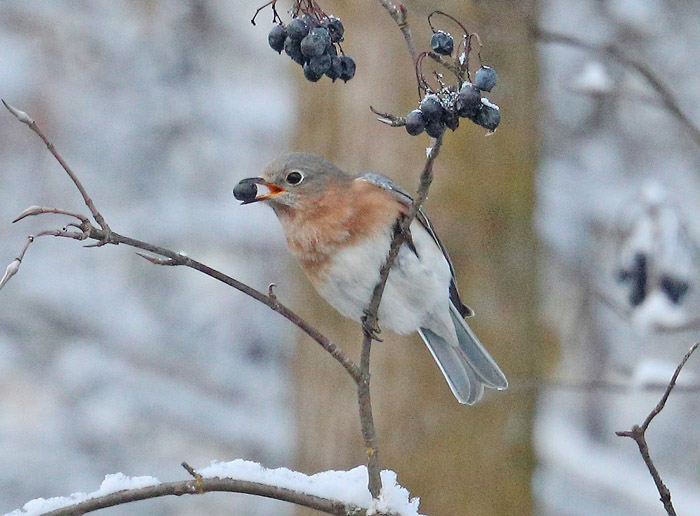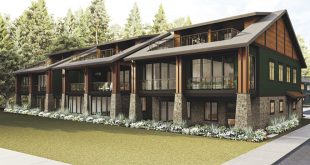By David Cederstrom, Chronicle Staff Writer
Many people in the area have noticed a lack of birds at their feeders this fall, but Jim Farquhar, chief of the Bureau of Wildlife at the state Department of Environmental Conservation, tells The Chronicle that the birds are around, but have been actively foraging on natural foods.
“There’s nothing to indicate that there’s any issues” with bird population numbers, he said.
Mr. Farquhar predicted, now that there’s been some snow and colder winter weather, that common local birds such as chickadees, blue jays and juncos “are going to start being much more attracted to the food that comes with feeders.”
“I think were going to see that change pretty quickly,” he said, although it may take birds a little while to find the feeders.

Mr. Farquhar also said relatively short-distance migrants that often come from the north should also start showing up.
Birds have started showing up at feeders farther north, he said.
“The Cornell Lab of Ornithology has also received many more questions than usual about this from people who are concerned that something drastic might be happening with bird populations, particularly in the Northeast,” said Cornell Lab spokeswoman Patricia Leonard.
She said, “To the best of our knowledge there is no need for people to worry. There has been a bumper crop of cone seeds and fruit this year, along with an extended period of warmer weather making it possible for the birds to find naturally-occurring food instead of going to feeders. As we settle into colder, snowier weather, it’s entirely possible that the birds will again return to feeders to supplement their diet.”
The lack of birds at feeders in the fall happens in some years, Mr. Farquhar said.
“It’s pretty natural in a year when we’ve got a pretty good abundant natural food source,” he said.”This year was one of those years when we generally got some pretty good rain and we had some very abundant natural foods available.”
“It was just hard to get them [the birds] to congregate, or want to congregate, around feeders and those sorts of things early on,” he said.
However, Ms. Leonard added, “The abundance of food may partially explain the apparent lack of birds…but it is also entirely possible there are other unknown factors in play because people are also reporting fewer of the species that don’t visit feeders. Bird populations do fluctuate quite bit even in a normal year.

“Because we get asked about this so often, we have a web page dedicated to some of the reasons that people may be seeing fewer birds: http://www.allaboutbirds.org/im-seeing-fewer-birds-in-my-yard-is-something-affecting-their-populations.”
The site covers such things as weather, predators, habitat loss and more that can affect bird populations.
Copyright © 2017 Lone Oak Publishing Co., Inc. All Rights Reserved.
 Glens Falls Chronicle Serving the Glens Falls/Lake George region; Warren, Washington and northern Saratoga counties since 1980
Glens Falls Chronicle Serving the Glens Falls/Lake George region; Warren, Washington and northern Saratoga counties since 1980


